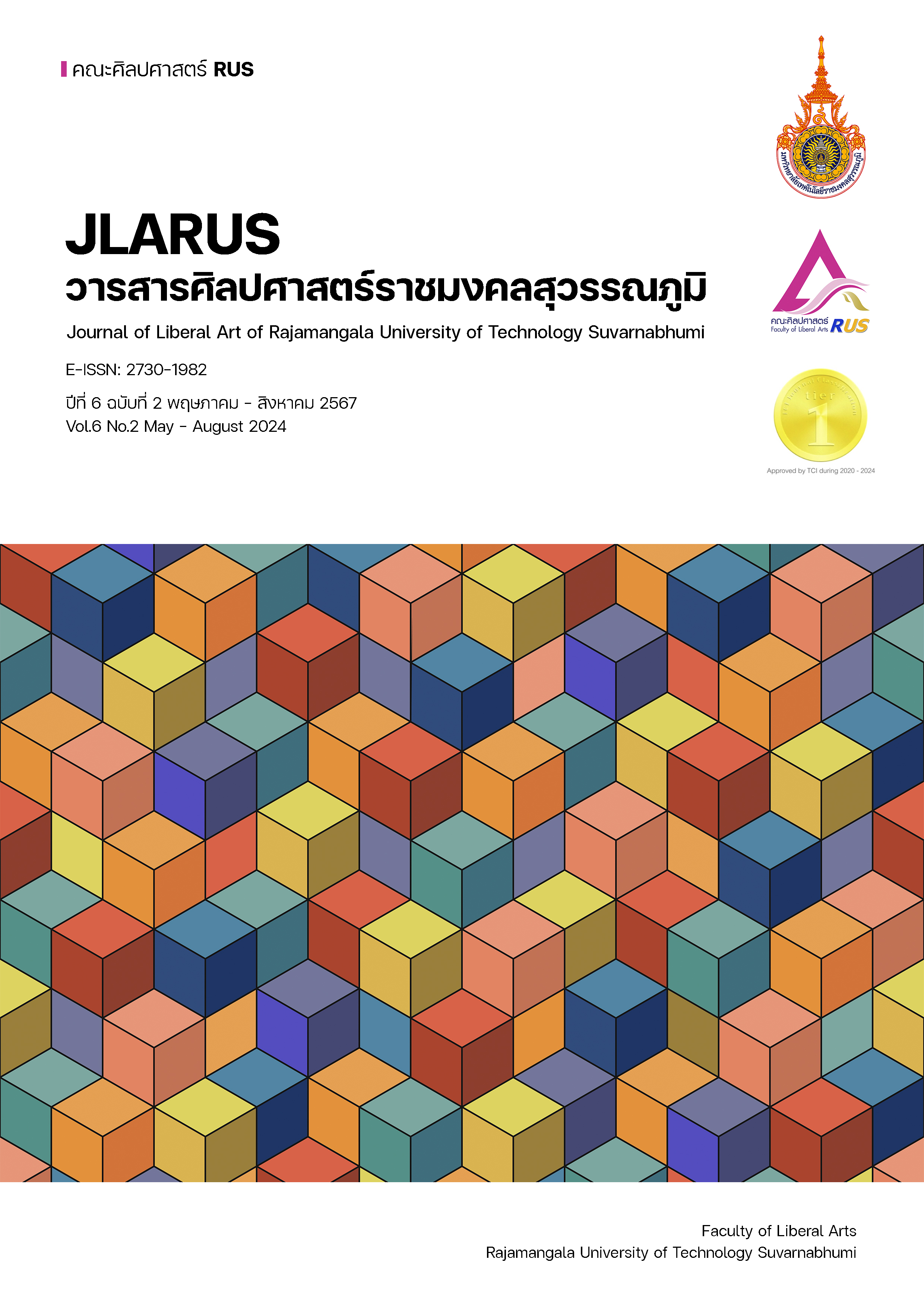THE HAPPINESS AND QUALITY OF LIFE OF THE SCHOLARSHIP DOCTORS IN NAKHON PHANOM PROVINCE
Main Article Content
Abstract
In this research, a cross-sectional survey with the objective to study the level of happiness and quality of life of scholarship doctors in Nakhon Phanom Province was conducted. The population included scholarship doctors studying in Nakhon Phanom Province in 2023 with a total of 50 people. The instruments used in the research were a self-report happiness survey and the World Health Organization quality of life assessment. Data were analyzed using statistics, frequency, percentage, mean, and standard deviation.
Based on the results of the study, it was found that: 1. The overall happiness of the scholarship doctors was at a happy level (71.15%), while the aspect of good health was at the extremely happy level (83.30%), good relaxation was at a happy level (72.10%), kindness was at a happy level (70.20%), the good spirituality aspect was at a happy level (83.20%), the good family aspect was at a happy level (70.10%), the good society was at the happy level (74.00%), good knowledge was at a happy level (66.15%), good health and money were at a happy level (65.10%), and good work was at the level of happiness (56.20%); and 2. Regarding the quality of life of the scholarship doctors, the overall happiness level was moderate to good (79.75%), and consideration of each area was as follows: The physical aspect was at a good level (85.71%), the mental aspect was at a moderate level (66.66%), the social relationship aspect was at a good level (86.66%), and the environmental aspect was at a good level (80.00%). Thus, based on this discovery of new knowledge, the happiness and quality of life of scholarship doctors should be improved to a happier and better level.
Article Details

This work is licensed under a Creative Commons Attribution-NonCommercial-NoDerivatives 4.0 International License.
References
ภาณุภาคย์ พงศ์อติชาต. (2550). การเสริมสร้างคุณภาพชีวิตและการทำงาน กระแสใหม่ของการบริหาร ทรัพยากรบุคคล. กรุงเทพมหานคร: แอร์บอร์นพรินต.์
พัณณ์ชิตา รัศมีสุรวุฒิคุณ และคณะ. (2566). คุณภาพชีวิตของบุคลากรทางการแพทย์ในโรงพยาบาล รามาธิบดีในสถานการณ์การแพร่ระบาดโควิด-19. วารสารรัฐประศาสนศาสตร์ มหาวิทยาลัยราชภัฏสวนสุนันทา, 6(1), 109.
ธเนศ ถวิลหวัง. (2558). การพัฒนาคุณภาพชีวิต และองค์กร. นครพนม: สำนักงานปศุสัตว์จังหวัดนครพนม.
สุภาณี ธนสมบัติ และคณะ. (2565). ความสุขในการทำงานของบุคลากรสำนักงานสาธารณสุขจังหวัดปทุมธานี. วารสารวิชาการสำนักงานสาธารณสุขจังหวัดมหาสารคาม, 6(12), 111.
สุวัฒน์ มหัตนิรันดร์กุล และคณะ. (2540). เปรียบเทียบแบบวัดคุณภาพชีวิตขององค์การอนามัยโลก ทุก 100 ตัวชี้วัด และ 26 ตัวชี้วัด. เชียงใหม่: โรงพยาบาลสวนปรุง จังหวัดเชียงใหม่.
สุวัฒน์ มหัตนิรันดร์กุล และคณะ. (2545). โครงการจัดทำโปรแกรมสำเร็จรูปในการสำรวจสุขภาพจิต ในพื้นที่ ปี พ.ศ. 2545. เชียงใหม่: โรงพยาบาลสวนปรุง จังหวัดเชียงใหม่.
ศิรินันท์ กิตติสุขสถิต และคณะ. (2554). แบบสํารวจความสุขด้วยตนเอง. นครปฐม: สถาบันวิจัยประชากรและสังคม มหาวิทยาลัยมหิดล.
ศิรินันท์ กิตติสุขสถิต และคณะ. (2555). คู่มือการวัดความสุขด้วยตนเอง Happinometer. นครปฐม: สถาบันวิจัยประชากรและสังคม มหาวิทยาลัยมหิดล.
ศิรินันท์ กิตติสุขสถิต และคณะ. (2556). คุณภาพชีวิต การทำงาน และความสุข. กรุงเทพมหานคร: โรงพิมพ์ธรรมดาเพรส จำกัด.
Burton, J. (2010). WHO Healthy workplace framework and model: Background and supporting literature and practice. Retrieved January 10, 2024. from http://www.who.int/ occupational_health/healthy_workplace_framework.pdf
Joanna Forycka, et al. (2022). Polish medical students facing the pandemic- Assessment of resilience, well-being and burnout in the COVID-19 era. PLoS ONE, 17(1) 1-2.
Lyubomirsky, S. et. al. (2005). The benefits of frequent positive affect. Psychological Bulletin, 131(6).
Manion, Jo. (2003). Joy at Work: Creating a Positive Work Place. Journal of Nursing Administration.
Stojanov, J., et al. (2020). Quality of sleep and health-related quality of life among health care professionals treating patients with coronavirus disease-19. International Journal of Social Psychiatry, 67(2), 1-7.
Oliver, R.L. (1997). Satisfaction: A behavioral perspective on the consumer. New York: Irwin/ McGraw-Hill.
Veenhoven, R. (1997). Advances in understanding happiness. Revue Quebecoise de Psychologie, 18, 267-293.
World Health Organization. (2004, November). Quality of Life (WHOQOL)-BRE. Geneva: WHO. Retrieved January 10, 2024. from https://www.who.int/substance_ abuse/research_tools/whoqolbref/en.


